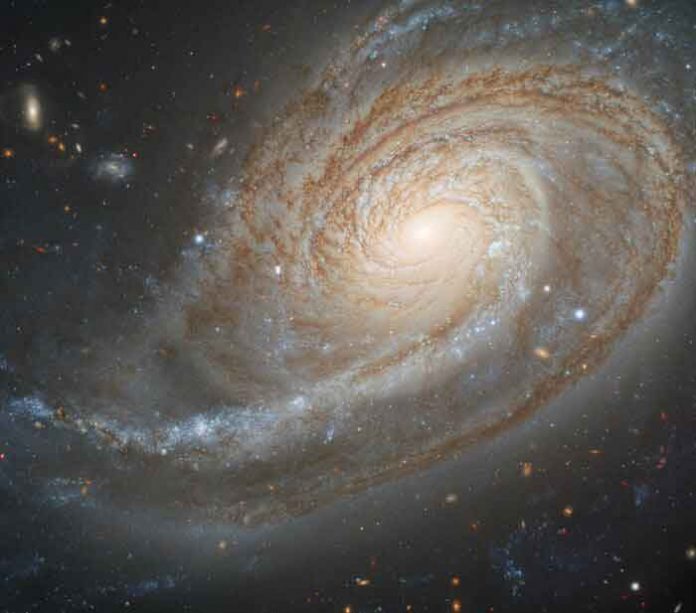The image shows the strangely lopsided spiral galaxy NGC 772. It lies over 100 million light-years from Earth in the constellation Aries. It is captured by the Gemini North telescope in Hawai’i. The image shows NGC 772’s overdeveloped spiral arm. It stretches across toward the left-hand edge of the frame.
This extra-large arm is due to one of NGC 772’s unruly neighbors, the dwarf elliptical galaxy NGC 770. The tidal interactions between NGC 772 and its diminutive companion have distorted and stretched one of the spiral galaxy’s arms. It gave the lopsided appearance in this image.
NGC 772 also lacks a bright central bar. Other spiral galaxies like the Andromeda Galaxy or our own Milky Way exhibit prominent central bars. Large, linear structures composed of gas, dust, and countless stars. NGC 772’s spiral arms sweep out directly from the bright center of the galaxy, without a bar.
The galaxy’s unusual appearance has earned it the distinction of appearing in the “Atlas of Peculiar Galaxies”. It is a l curation by astronomer Halton Arp of some of the weird and wonderful galaxies populating the universe.
The 338 galaxies in the atlas are a rogues’ gallery of strange and unusual galaxy shapes chosen to provide astronomers with a catalog of odd galaxy structures. Entries in the “Atlas of Peculiar Galaxies” include galaxies boasting trailing tidal tails, rings, jets, detached segments, and a host of other structural idiosyncrasies. NGC 772 is included as Arp 78.
There is also a menagerie of galaxies lurking in the background, while NGC 772’s peculiarities dominate this image. The bright smears and smudges littering this image are distant galaxies. Some of the closer examples can be resolved into characteristic spiral shapes. Every direction on the sky that astronomers have pointed telescopes toward contains a rich carpet of galaxies, with an estimated 2 trillion galaxies in total in our observable universe.

